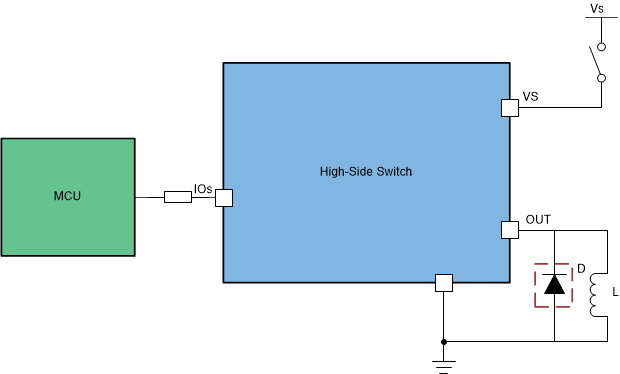SLVSEE0D February 2018 – September 2021 TPS1H200A-Q1
PRODUCTION DATA
- 1 Features
- 2 Applications
- 3 Description
- 4 Revision History
- 5 Pin Configuration and Functions
- 6 Specifications
- 7 Detailed Description
- 8 Application and Implementation
- 9 Power Supply Recommendations
- 10Layout
- 11Device and Documentation Support
- 12Mechanical, Packaging, and Orderable Information
Package Options
Mechanical Data (Package|Pins)
- DGN|8
Thermal pad, mechanical data (Package|Pins)
- DGN|8
Orderable Information
7.3.6.4 Loss-of-Power-Supply Protection
When a loss-of-power-supply occurs, the output shuts down, regardless of whether the IN pin is high or low. For a resistive or a capacitive load, the loss-of-power-supply has no risk. But for a charged inductive load, the current is driven from all the logic control pins to maintain the inductance current. To protect the system in this condition, TI recommends protection with an external free-wheeling diode.
 Figure 7-16 Protection for Loss of Power Supply
Figure 7-16 Protection for Loss of Power Supply